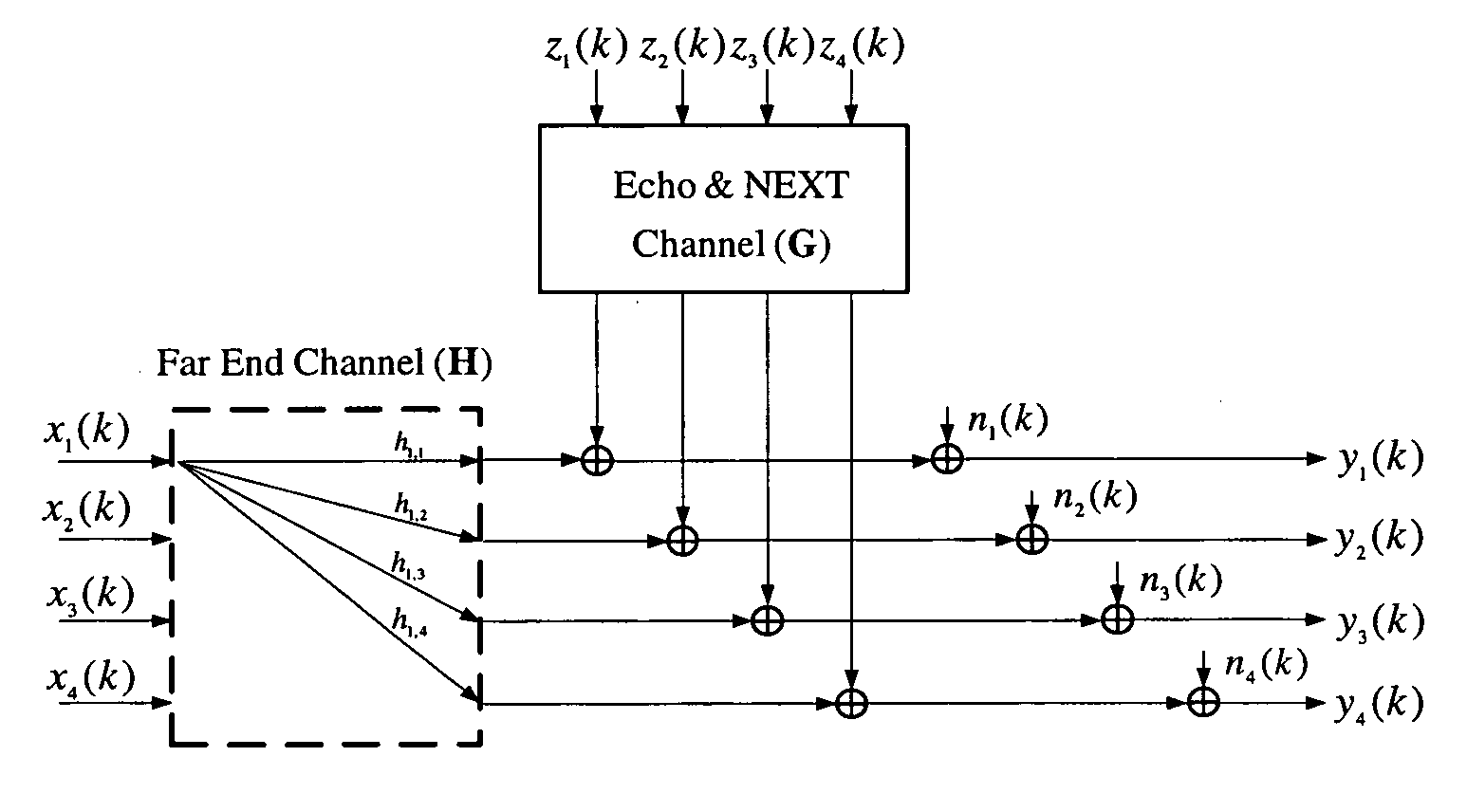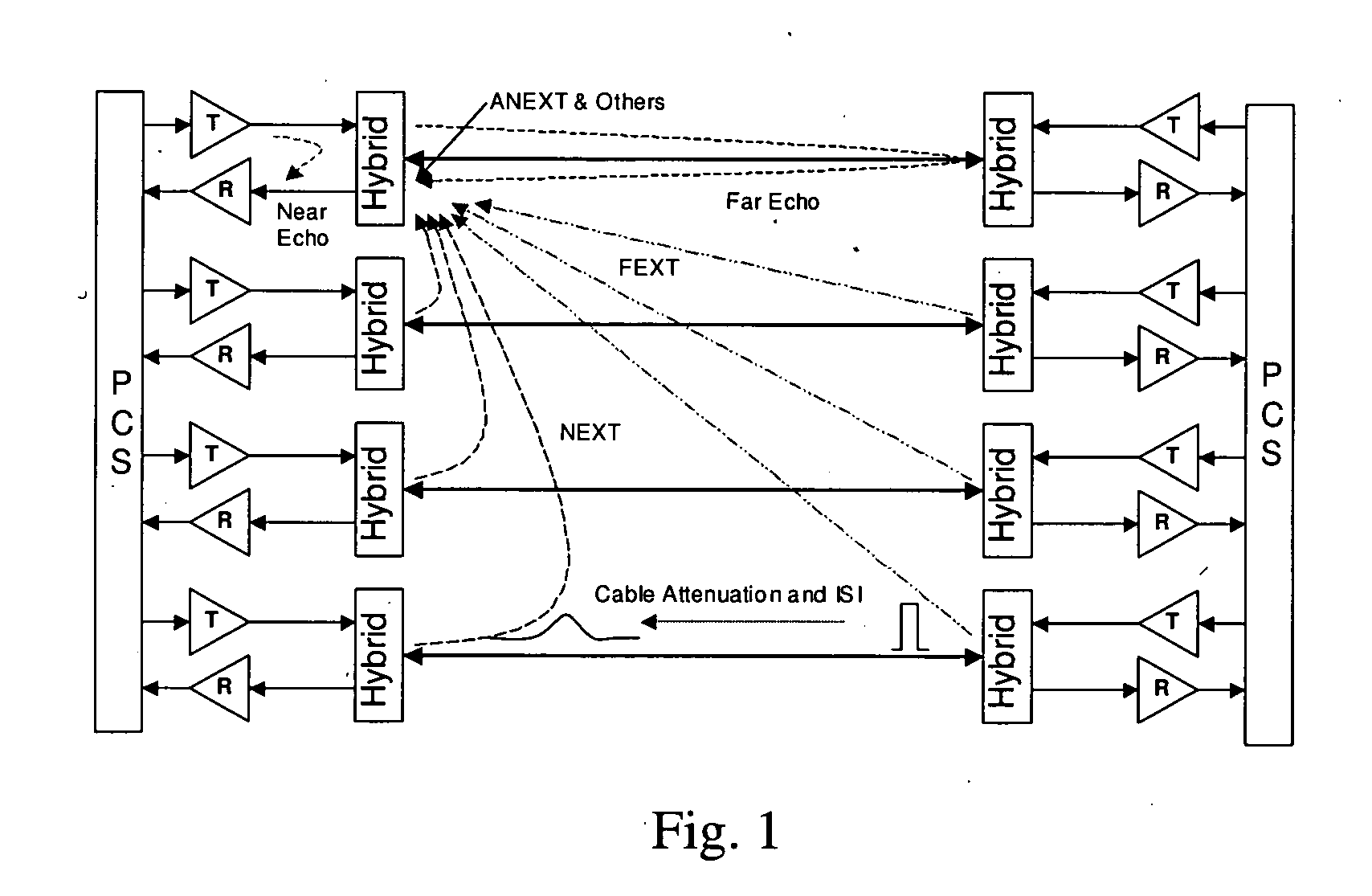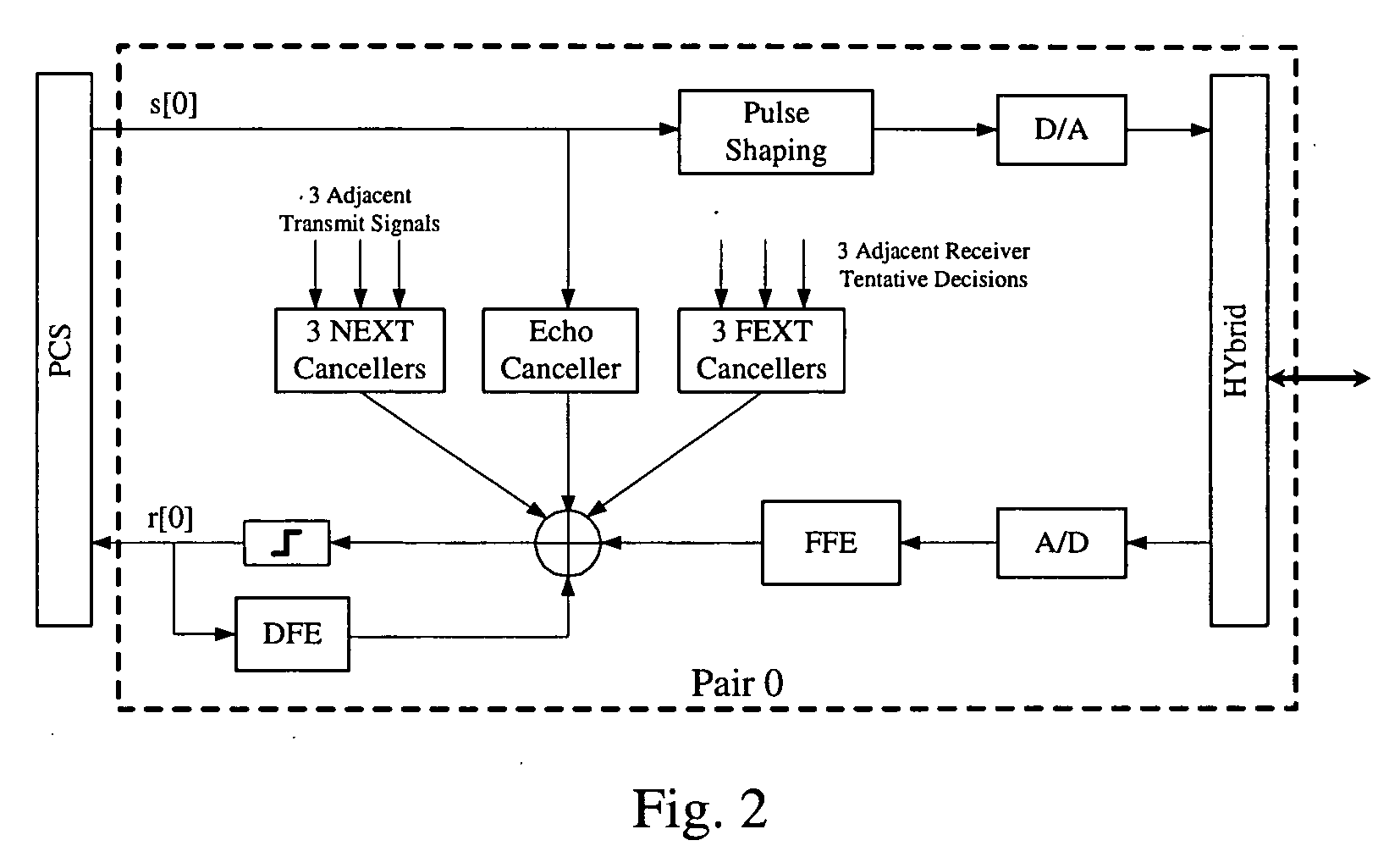System and method for MIMO equalization for DSP transceivers
a digital signal processing and equalization technology, applied in the field of data processing, transmission, digital communication, can solve the problems of large silicon area and power consumption, inability to implement fext cancellers, and inability to reliably high-speed digital transmission, etc., to achieve low complexity and improve performance.
- Summary
- Abstract
- Description
- Claims
- Application Information
AI Technical Summary
Benefits of technology
Problems solved by technology
Method used
Image
Examples
Embodiment Construction
Background on Traditional Equalization Scheme and FEXT Treatment in 10GBASE-T
[0029] Consider typical 10GBASE-T channel environment over UTP cables in FIG. 1, we see that, the received signal not only suffers from signal attenuation and ISI but also suffers from echo, near-end crosstalk, far-end crosstalk, and other interferences such as alien NEXT. To meet the desired throughput and target BER requirements, the receiver has to perform a significant amount of digital adaptive filtering operations. The traditional scheme presented for 10GBASE-T uses four separate feed-forward equalizers to individually remove pre-cursor ISI for each channel and treat FEXT crosstalk as noise to be cancelled after the FFE. Consider the block diagram of the typical 10GBASE-T transceiver for one pair in FIG. 2, we need three FEXT cancellers for each of four channels (or four pairs). These cancellers can be implemented based on adaptive FIR filters with the input signals derived from tentative decisions....
PUM
 Login to View More
Login to View More Abstract
Description
Claims
Application Information
 Login to View More
Login to View More - R&D
- Intellectual Property
- Life Sciences
- Materials
- Tech Scout
- Unparalleled Data Quality
- Higher Quality Content
- 60% Fewer Hallucinations
Browse by: Latest US Patents, China's latest patents, Technical Efficacy Thesaurus, Application Domain, Technology Topic, Popular Technical Reports.
© 2025 PatSnap. All rights reserved.Legal|Privacy policy|Modern Slavery Act Transparency Statement|Sitemap|About US| Contact US: help@patsnap.com



